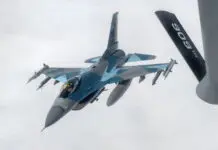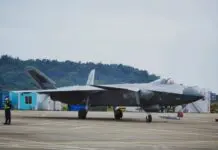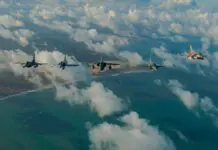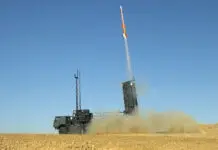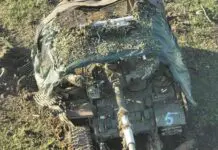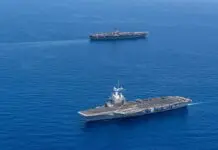The IFV project of the Argentine Army is one of the many highly relevant initiatives that could have developments in the short to medium term. Despite negotiations in recent years having positioned the Iveco Guarani one step above the other candidates, the change in the national management has reopened the door to the Stryker family, as well as to other offers.
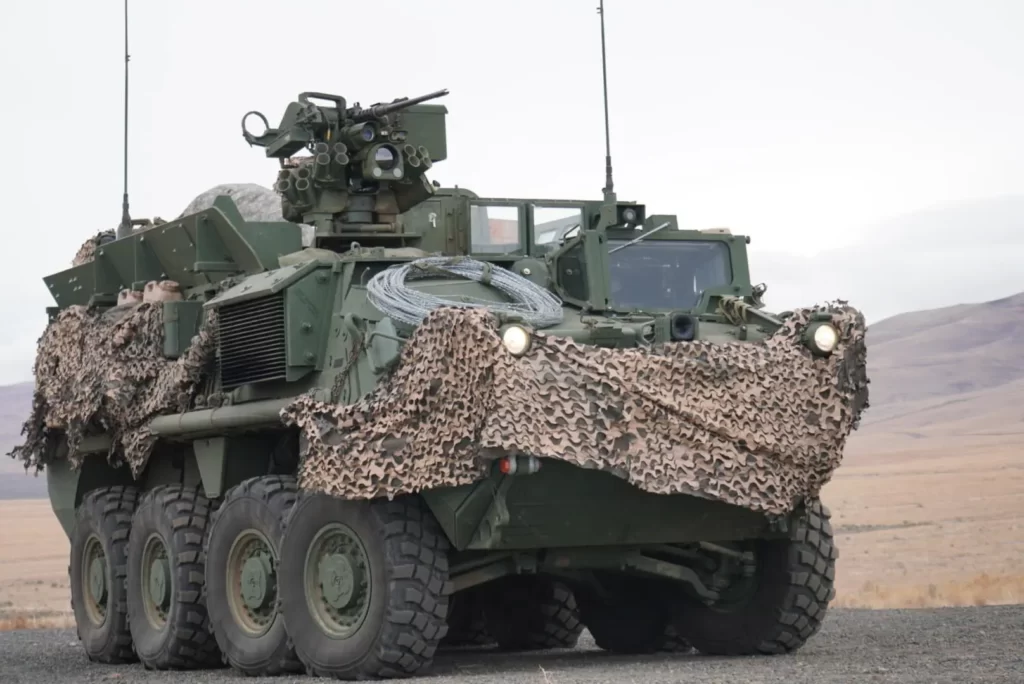
As we have reported on Zona Militar, the IFV project aims to incorporate a family of armored vehicles that will be part of the equipment of the yet-to-be-established Medium Wheeled Brigade of the Argentine Army. The program seemed to have reached its level of maturity before the signing of a contract with the selection of the Guarani, a 6×6 model developed by Iveco Defence Vehicles and the Brazilian Army.
Although negotiations for the Guarani IFV would go beyond the stage of signing a letter of intent, the initiative would come to a pause due to the Argentine government’s inability to secure financing that suited its budget. It is worth noting that the signing of the document took place in January 2023, with the signatures of the then Minister of Defense of the Argentine Republic, Jorge Taiana, and the Foreign Minister of the Federative Republic of Brazil, Mauro Vieira, and it involved the purchase of 156 units.
Among the 156 Guarani IFV units envisaged in the letter of intent, the Argentine Army intended to incorporate a fleet consisting of 120 Personnel Carrier Vehicles (IFV-PC) equipped with a REMAX turret armed with a 12.7mm machine gun, 27 Infantry Combat Vehicles (IFV-ICV) with a UT30BR2 turret armed with a 30mm cannon, and 9 Command Post vehicles (IFV-CP).
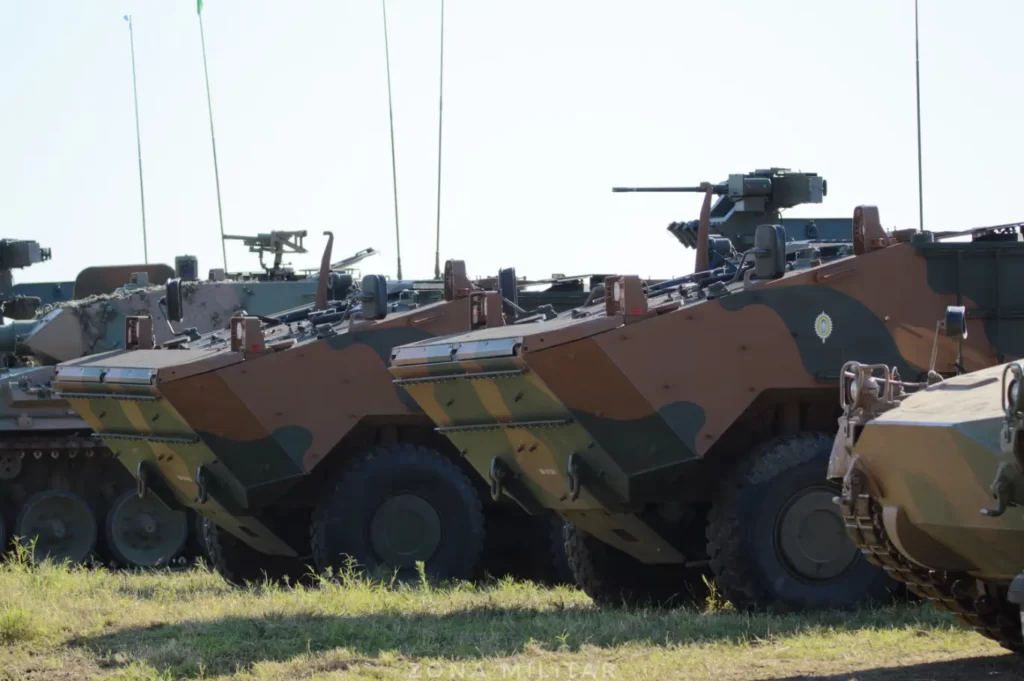
The unsuccessful negotiations with Brazil to finalize financing for the purchase of the Guarani IFV included various actors, both from the neighboring country and from Argentina. Among them were the National Bank for Economic and Social Development (BNDES), the Ministry of Development, Industry, Trade and Services (MDIC), the Brazilian Agency for Management of Guaranteed Funds and Guarantees (ABGF), the Export Financing and Guarantees Committee (COFIG), as well as the Argentine Ministries of Economy and Defense.
The Stryker Returns to the Scene
After the change in administration, and with the current government’s open intention to align with the U.S., the Stryker IFV re-entered the scene. It is worth remembering that the American 8×8 armored vehicle had previously been a candidate some years ago, a process that even included a Foreign Military Sales (FMS) case through which the sale of 27 Strykers in their M1126 Infantry Carrier Vehicle variant was arranged. The potential sale notified in July 2020 also included weaponry, night vision equipment, communications, personnel training, spare parts, tools, as well as engineering, technical, and logistical support services from the U.S. Government and contractors, among others. The estimated cost was $100 million dollars.
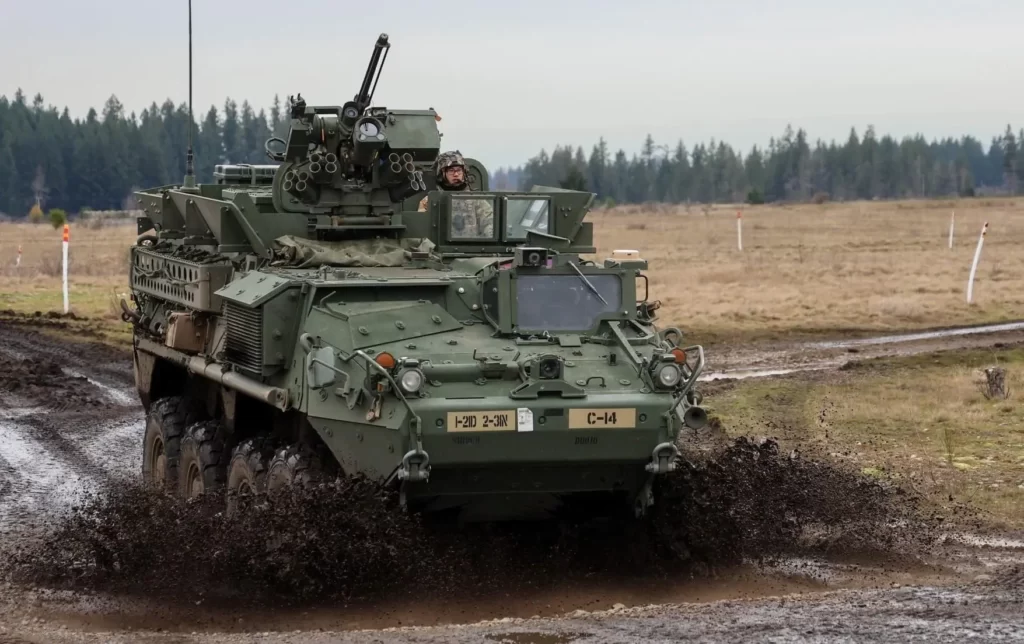
Like other FMS cases arranged for Argentina, the purchase of Stryker IFVs did not materialize as the project reconsidered other candidates. This was something we reported early on at Zona Militar when in August 2020 we anticipated Argentina’s renewed interest in products offered by Iveco.
The latest developments regarding the Stryker were addressed at the end of February, when sources close to the project confirmed that Washington’s offer is based on the 2020 proposal, to which other versions of the 8×8 IFV would be added. This would include the Infantry Combat Vehicle, Recovery Vehicle, Ambulance, and Tank Destroyer versions. The aim is to offer the Argentine Army a complete family of IFVs consolidated through the Stryker 8×8, a core requirement of the program.
With several years of development and refinement, including combat operations, the Stryker presents itself as a convenient solution for the Argentine Army’s IFV project. This is because the American 8×8 not only offers eleven variants but also benefits from the support provided by the manufacturer and the U.S. Army, in addition to financing facilities.
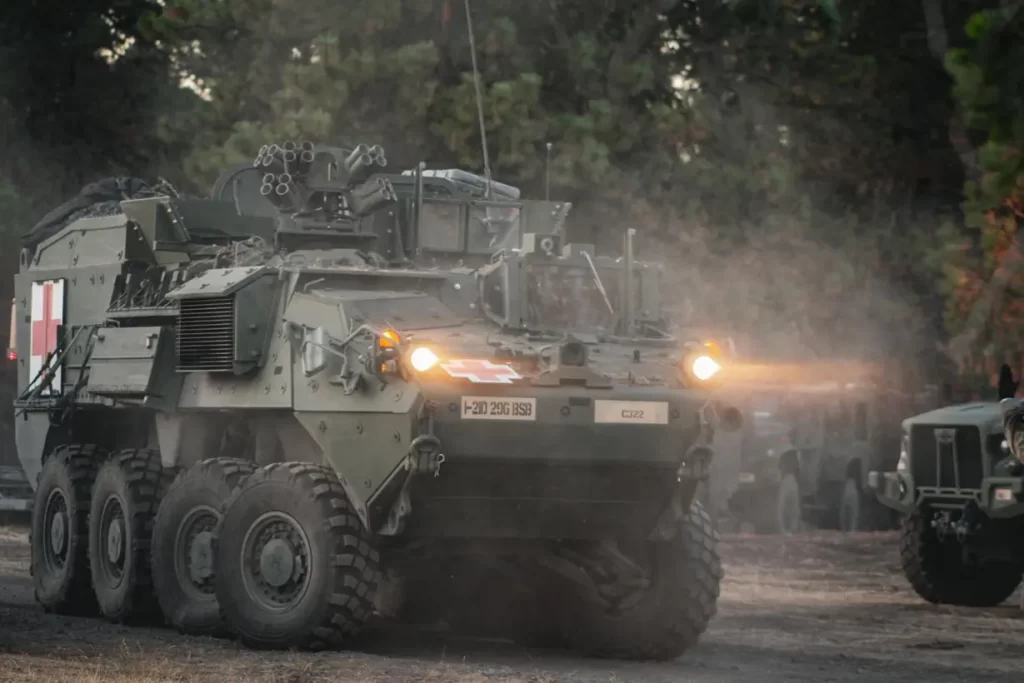
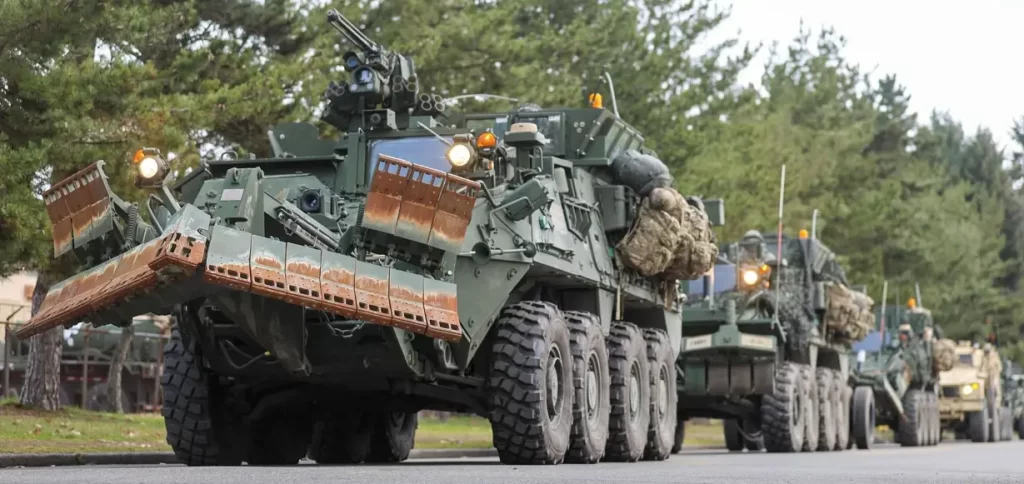
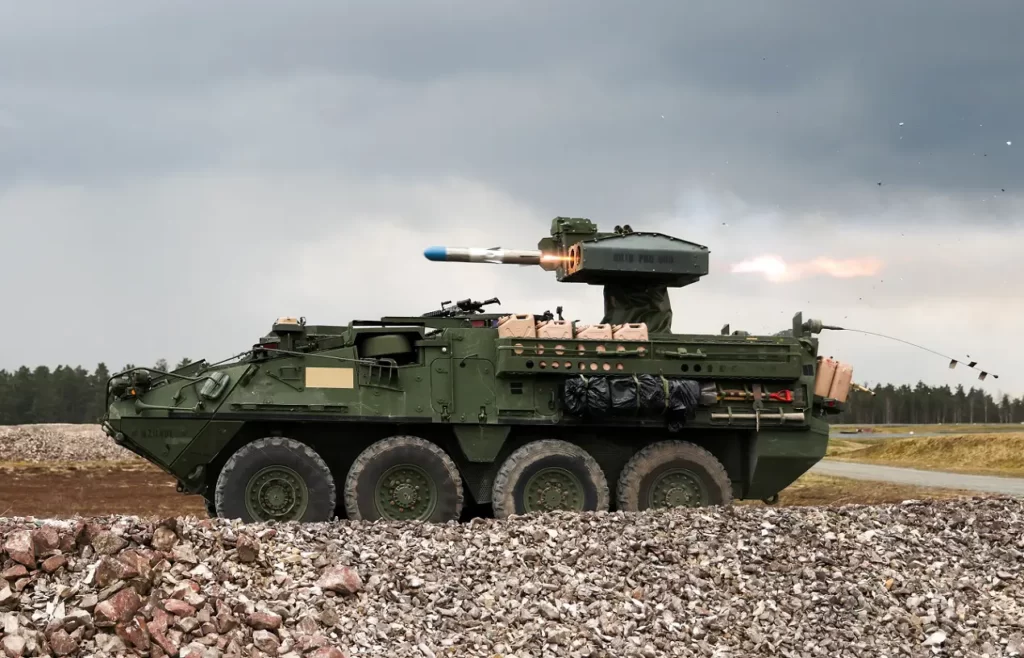
For the Argentine Army’s Medium Wheeled Brigade, the purchase of 209 IFVs divided into nine variants was considered to equip seven tactical units. The requirement was for 120 Personnel Carrier Vehicles armed with a 12.7mm M2 machine gun, 27 Infantry Combat Vehicles armed with a 30mm cannon, 14 Tank Hunters, 12 Mortar Carriers, 9 Command Post Vehicles, 9 Ambulances, 8 Recovery Vehicles, 6 Bridge Layers, and 4 Breaching Vehicles.
If this requirement were to be maintained, the Stryker could be incorporated in the M1126 infantry transport, M1296 Dragoon IFV, M1134 anti-tank, M1129 mortar carrier, M1130 command vehicle, M1133 medical evacuation, and M1132 engineer versions. Recovery and bridge layer variants could be supplied with specialized models from the MTV and/or HEMTT tactical truck families.
Offers from Canada
Maintaining a low profile, Canada has not only put forward several proposals for the Armed Forces for some time but has also managed to secure some sales recently. For the IFV project, the proposal comes from General Dynamics Land Systems through the Canadian Commercial Corporation.
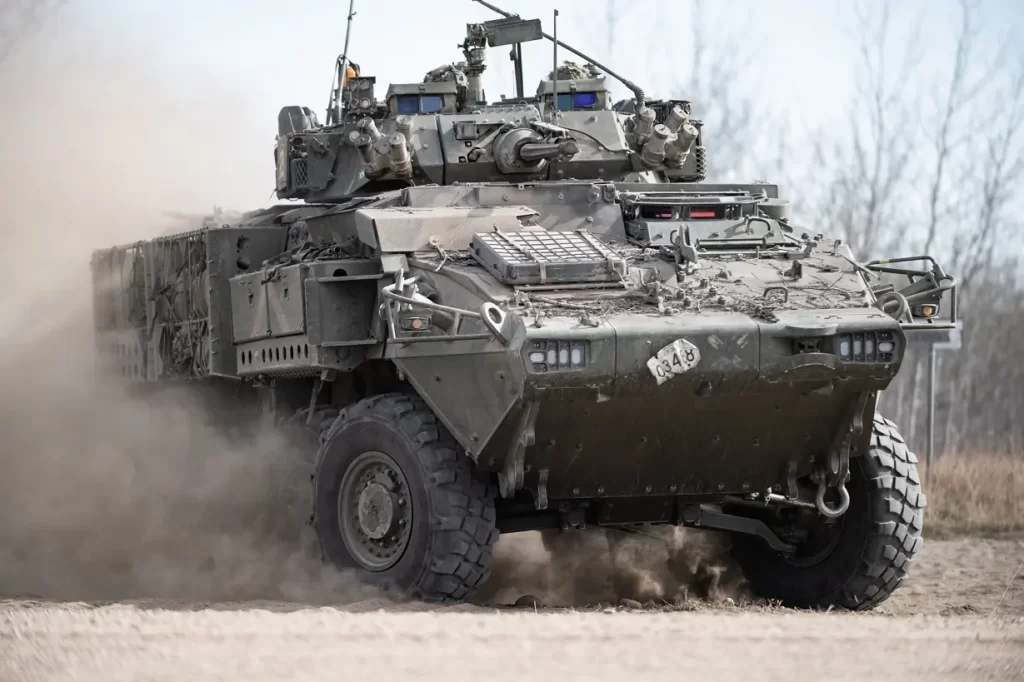
The LAV III, the model on which the Stryker was developed, not only serves in the Canadian Army under the designation LAV 6.0 (LAV III after undergoing the Light Armoured Vehicle III upgrade), but has also been exported to New Zealand under the designation NZLAV.
The New Zealand Defence Force incorporated its first NZLAVs in 2003 as part of the project to modernize its mechanized units. The IFVs, intended to replace the veteran M113s, incorporated some specific requirements, such as their tactical navigation system, laser rangefinder, and additional equipment. The latter includes laser warning receivers, GID-3 chemical agent detection kits, among others.
New Zealand acquired 105 LAV IIIs, 102 in their IFV variant armed with a 25mm Bushmaster cannon, and three recovery vehicles. Having incorporated the last unit in 2004, it was initially estimated that the service life of the IFVs would be extended by 25 years. By 2022, the fleet would be reduced to 74 vehicles after 1 NZLAV was destroyed in Afghanistan, 22 were sold to the Chilean Navy, while 8 armored vehicles are still available for sale.
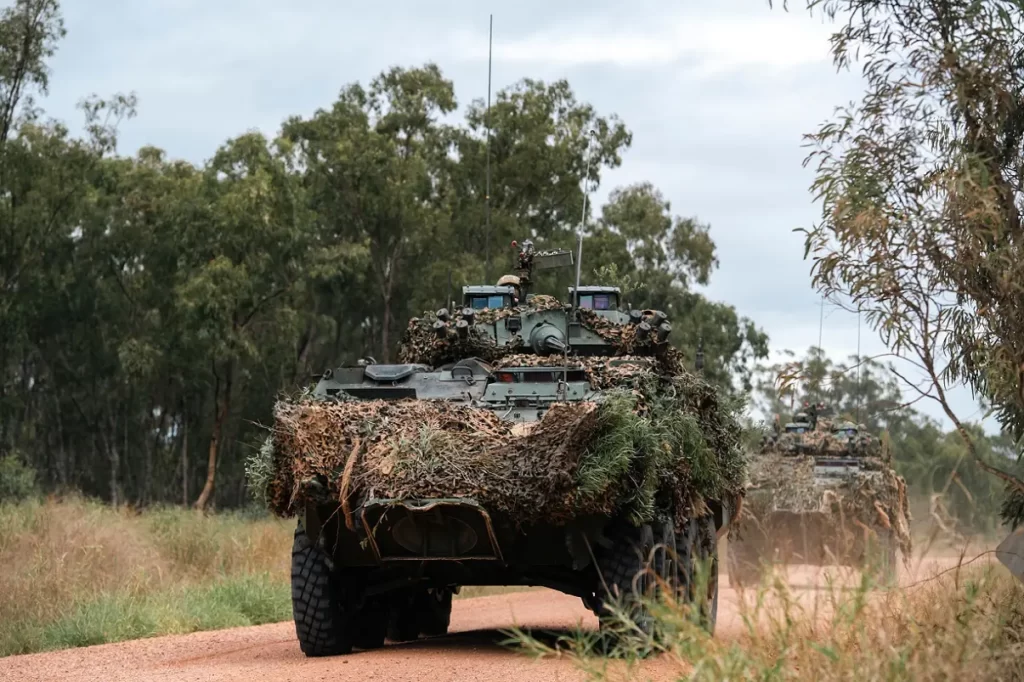
An important detail is that, despite using the same LAV III platform, the IFV models of Canada, New Zealand, and the U.S. differ in several aspects, and only the Stryker has developed and perfected a complete family. The aforementioned is not a minor detail when considering a homogeneous fleet, both in terms of configuration and residual service life, among other aspects.
Illustrative cover image. Credits: US Army – Spc. William Kuang
You may also like: The Argentine Navy corvette ARA Rosales completed a stage of individual training




